Interdisciplinary knowledge
In order to support and stimulate the student’s actions, imagination and mind-set (the inner elements), the outer elements of the DesUni model create a learning environment that assists teachers in constructing an educational setting in which students are likely to use their imagination, act and adopt a design-oriented mind-set in their work with the curriculum.The five outer factors guide teachers in designing a design-oriented educational setting, with the intention of changing the student’s expectations from being passive receivers of theoretical knowledge, to becoming active creators of knowledge and primary agents in their own teaching process.
To assist teachers in constructing an educational setting in which students are likely to use their imagination, act and adopt a design-oriented mind-set in their work with the curriculum (the three inner factors of the DesUni model), the model offers fives factors that guide teachers in designing a design-oriented educational experience (the five outer factors of the DesUni model).
Knowledge is one of the five outer factors. University education is often focused on knowledge as something that is, or has been. DesUni learning also requires that students shift, form and/or refine knowledge (Faiola, 2007). However, in order to construct new knowledge, existing knowledge is needed to fuel the student’s imagination (Seeling, 2012). Prior knowledge is something that can be used creatively to turn things upside down in such a way that new knowledge emerges (Ward, 2004). Prior knowledge can be transformed, analogically moved to other contexts and combined to produce new opportunities and solutions.
Whilst universities are often divided into a set of delimited trails of knowledge (business, psychology, law, etc.), to connect and construct new knowledge, interdisciplinary set-ups are essential to DesUni learning. This is consistent with the interdisciplinary reality facing students after university Figure 6.

Figure 6. Knowledge requires different combinations of knowledge
It is also essential to activate students’ tacit knowledge in the knowledge construction process (Nonaka & Takeuchi, 1995). Tacit knowledge consists of the student’s ideas, values and needs, but at the same time, his or her imagination represents an almost boundless source of knowledge that students are not always aware of possessing. To work with this, as a way of gaining learning throughout the process, tacit knowledge can be developed through facilitation, shared learning, social interaction and brainstorming, which are some of the tools typically applied by designers.
Literature:
Faiola, A. (2007), The Design Enterprise: Rethinking the HCI Education Paradigm. Design Issues, Vol. 23 No. 3, pp. 30-45.
Nonaka, I. and Takeuchi, H. (1995), The knowledge-creating company. New York, Oxford, Oxford University Press.
Seelig, T. (2012), InGenius: A Crash Course on Creativity. New York: HarperCollins.
Ward, T. B. (2004), Cognition, creativity, and entrepreneurship. Journal of Business Venturing, Vol. 19: pp. 173-188.